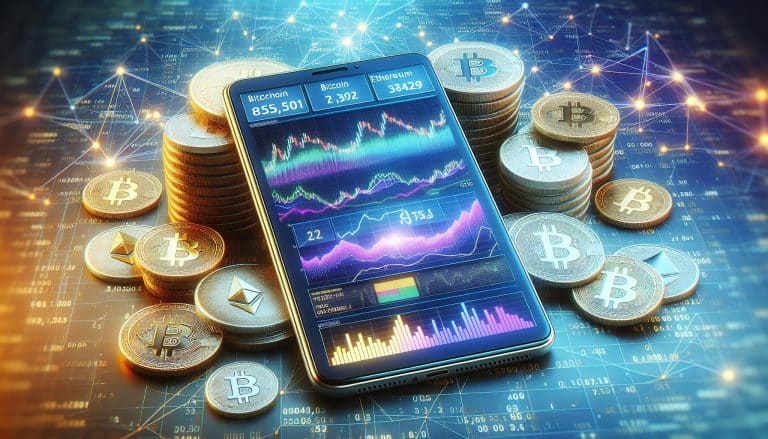Xrp Price History And Investor Behavior
XRP is a cryptocurrency that has experienced dramatic price fluctuations over the years. Its value was initially low, but it quickly rose to dizzying heights in 2017 and 2018, making XRP one of the most successful investments of all time. Unfortunately, its meteoric rise was accompanied by an equally dramatic fall, leaving many investors wondering what happened and how best to approach XRP as an investment today. In this article, we will take a look at the XRP price history and investor behavior in order to better understand these dynamics.
We will start by examining the historical price analysis of XRP and identifying key factors that have affected its price movements over time. We will then examine Ripple Labs’ role in influencing market sentiment around the asset before delving into how investor behaviour has been impacted by past events and current conditions. Finally, we will provide our insights on future price predictions for XRP as well as discuss the pros and cons of investing in it.
Overview of XRP
XRP, a digital asset created by Ripple Labs Inc., is widely traded and has become one of the most successful cryptocurrency projects to date. Built on blockchain technology, XRP is designed to facilitate secure payments and global money transfers with fast transaction times and low fees. Technical analysis of the XRP market has shown that it exhibits strong price movements which can be used to inform investor decision-making. Furthermore, its high liquidity makes it attractive for traders as they can enter or exit positions at any time without incurring significant costs. As such, XRP has become an increasingly popular trading asset over the years. With this in mind, we will now turn our attention towards exploring XRP’s historical price movements as a means of further understanding investor behavior.
Historical Price Analysis
The XRP cryptocurrency has seen significant price movements in the past few years. In 2017 and 2018, its value rose steadily from a low of $0.25 USD to an all-time high of nearly $3.50 USD by January 2018. However, after this peak, its value began to decline rapidly until it hit lows of around $0.20 USD in late 2019 and early 2020 before rebounding somewhat since then. This demonstrates that the market for XRP is highly volatile and unpredictable, with prices subject to rapid changes in investor sentiment and broader economic trends.
Price movement in 2017-2018
Rippling through the cryptocurrency market in 2017 and 2018, XRP had a significant impact on price movement. Many investors speculated that this was due to the steady growth of public interest in cryptocurrencies, as well as an increase in trading volumes which led to enhanced market sentiment. During this period, XRP experienced huge fluctuations from lows of $0.21 in December 2017 up to highs of $3.84 in January 2018 due to speculation trends and fluctuating market sentiment. This surge caused many investors to become bullish on XRP; however, those gains were short-lived and prices fell rapidly between April-May 2018. As such, it is clear that investor behavior during this period was greatly impacted by both speculation and market sentiment.
Price movement in 2019-2020
Since 2019, XRP has experienced a range of price fluctuations as market sentiment and speculation have continued to shape its performance. In the first half of the year, XRP saw a steady increase in value until June, with prices reaching an all-time high of $0.96 USD. This was largely attributed to renewed confidence in the cryptocurrency industry following a more relaxed regulatory stance on digital assets from multiple countries. However, this positive momentum did not last long as community sentiment grew increasingly bearish towards the end of June due to events such as SEC scrutiny and court proceedings initiated by Ripple against YouTube for failing to take down malicious actors which were making false claims about XRP’s status as a security asset. This resulted in a significant drop in price from $0.96 USD at its peak to $0.29 USD by August 2019 and further losses over the remainder of 2019 until it stabilised again at around $0.20 USD by December that same year.
| Event | Date | Price |
|---|---|---|
| All-time High | June 2019 | 0.96 USD |
| SEC Scrutiny | July 2019 | 0 .29 USD |
| Price Stabilization | December 2020 | 0 .20USD |
The impact on investor behaviour is evident; since mid-2019 investors have been cautious when it comes to making decisions regarding investment into XRP given that there is still considerable uncertainty surrounding regulation changes and community sentiment towards the asset itself. Thus, despite some periods of growth throughout 2020, overall XRP prices remain much lower than they were prior to mid-2019 when compared against other major cryptocurrencies like Bitcoin or Ethereum which have seen explosive growth over this same period of time. As such, factors impacting XRP price are likely to be key determinants for any future upside potential for investors looking into this asset class going forward.
Factors Impacting XRP Price
Analyzing XRP price trends requires an understanding of the various factors impacting its value. These can include both internal and external forces, such as regulatory impacts, supply and demand trends, news events, investor sentiment, and more. Below are five of the most influential factors that have impacted the price of XRP:
- Regulatory Impact: Government regulations around cryptocurrency assets can have a major impact on their prices. For example, when Ripple was accused by regulators for alleged violations in terms of selling unregistered securities to investors in 2018-2019, it caused a drop in XRP’s market capitalization and prices.
- Supply & Demand: The interaction between buyers and sellers ultimately decides the value of any asset and this is true for XRP as well. When demand outstrips supply or vice versa, it causes changes in prices accordingly.
- News Events: Media coverage about cryptocurrency assets has a huge influence on their prices since they can easily affect investor sentiment towards them. Any negative news related to XRP may cause its price to go down while positive news could lead to an increase in its value.
- Investor Sentiment: Positive or negative sentiments from investors regarding specific cryptocurrencies can also drive its prices up or down significantly depending on how much attention they receive from traders and speculators alike.
- Technical Analysis: Technical analysis tools such as chart patterns used by traders often help them spot potential trading opportunities with digital assets like XRP which could result in higher profits if successful trades are made based on these predictions.
By understanding these key factors behind the movement of XRP’s price, investors will be better equipped to make informed decisions when trading this digital asset – particularly when taking into account Ripple Labs’ influence over its performance going forward into 2021 and beyond without necessarily needing to diversify their portfolio too much away from it specifically .
Ripple Labs and Its Influence
Ripple Labs, the company behind the popular cryptocurrency XRP, has been a major player in influencing its price. As one of the largest XRP holders, Ripple Labs holds the potential to introduce high levels of volatility into the market. Furthermore, their influence has been seen through their strategic partnerships with financial institutions that have helped drive adoption and increase liquidity. In addition to this, Ripple Labs also plays an important role in shaping regulatory implications for XRP as well as overcoming any resistance against its adoption. As such, it is clear that Ripple Labs has significant sway over XRP’s price movements due to its ability to affect both investor sentiment and market fundamentals. Taking these factors into consideration is critical when analyzing how XRP will perform in the future.
The actions taken by Ripple Labs can have a significant impact on investor behaviour when it comes to investing in XRP. For example, if news about a successful partnership between Ripple and a large financial institution causes XRP prices to rise then investors may be more inclined towards buying tokens as they recognize the potential for gains from holding them long-term. On the other hand, if there are reports of negative regulation or concerns around scalability then investors may become wary and avoid investing altogether which could cause downward pressure on prices. It is therefore important for investors to pay attention to any announcements made by Ripple regarding upcoming projects or partnerships so they can make informed decisions when considering investments in XRP. By understanding how Ripple’s actions can influence investor behaviour, investors can better prepare themselves for changes in asset prices and take advantage of opportunities accordingly.
Investor Behaviour
Investors must be aware of how their decisions may be impacted by Ripple’s actions when it comes to investing in cryptocurrencies. In particular, the company’s approach to cryptocurrency regulations and its ability to attract institutional investors can have a significant impact on investor behaviour. As such, understanding the implications of Ripple’s current strategies and future plans can help investors make more informed decisions when it comes to XRP price history and trends. Additionally, investors should also consider any potential legal or regulatory changes that could affect their investments as well as macroeconomic factors that might influence the market. By taking into account all of these factors, investors can better prepare themselves for future price predictions.
Future Price Predictions
The potential of XRP to experience drastic price fluctuations in the future requires careful consideration. Market speculation and regulatory uncertainty are two primary factors that can influence the direction of XRP’s price movements. Investors must consider these variables when making any decisions on whether to invest in XRP or not. Additionally, analyzing historical data will give an indication of how volatile the market for XPR has been and could prove useful in predicting future prices. While certain patterns may be observed from past events, it is important to remember that there is no guarantee that the same trends will continue into the future. With this in mind, it is advisable to take a cautious approach when investing in XRP as price swings can occur unexpectedly at any time. Having said that, understanding market forces and staying up-to-date with news related to cryptocurrency can help investors make better informed decisions about their investments going forward. To conclude, evaluating all the potential risks and rewards associated with investing in XRP is essential before taking any action so as to minimize losses and maximize gains.
Pros and Cons of Investing in XRP
Investing in XRP carries both potential rewards and risks that must be carefully weighed before taking action. When considering investing in XRP, investors must take into account several factors such as:
- Regulation – Depending on the jurisdiction of the investor, there may be restrictions or other requirements imposed by government regulators that could affect the ability to buy or sell XRP.
- Utility Value – As a utility token, the use cases for XRP are still being developed and tested. Investors should take this into consideration when assessing its potential value.
- Volatility – The price of XRP is subject to rapid changes due to speculation and market forces beyond investor control. This level of volatility can lead to significant gains as well as losses over short periods of time.
Overall, investors looking to invest in XRP must weigh these pros and cons carefully before making any decisions about their investments. Regulatory uncertainty, utility value considerations, and volatility levels should all be taken into account when deciding whether or not to invest in the cryptocurrency asset class.
Frequently Asked Questions
What is the current market capitalization of XRP?
The current market capitalization of XRP is approximately $15 billion, making it the third largest cryptocurrency after Bitcoin and Ethereum. Sentiment analysis and price prediction can help investors make informed decisions when trading XRP.
What other cryptocurrencies are competing with XRP?
XRP faces competition from other cryptocurrencies such as Bitcoin, Ethereum, Litecoin and more. When trading XRP, investors must weigh the advantages and disadvantages of each currency against their own strategies. Analyzing trading volumes and market capitalization can provide insight into which cryptocurrency is gaining traction in the markets.
What security measures are in place to protect XRP investors?
XRP investors are protected by a range of safety protocols and regulatory oversight. These safeguards include measures such as the implementation of Know Your Customer (KYC) and Anti-Money Laundering (AML) practices, encryption technologies, and periodic reviews.
What fees are associated with trading XRP?
XRP liquidity provides a range of trading fees depending on the platform – from fractions of a cent to a few dollars. A careful analysis of various platforms is necessary to ensure optimum profitability for XRP trades.
What is the minimum amount of XRP that can be purchased?
The minimum amount of XRP that can be purchased varies depending on the exchange. On certain exchanges, Ripple mining is required to purchase XRP, which has a minimum limit of 20 XRP. Other exchanges may have different limits or none at all.






 Bitcoin
Bitcoin  Ethereum
Ethereum  Tether
Tether  XRP
XRP  Wrapped SOL
Wrapped SOL  USDC
USDC  Lido Staked Ether
Lido Staked Ether  TRON
TRON  Dogecoin
Dogecoin  Cardano
Cardano  Figure Heloc
Figure Heloc  Bitcoin Cash
Bitcoin Cash  Wrapped stETH
Wrapped stETH  WhiteBIT Coin
WhiteBIT Coin  Wrapped Bitcoin
Wrapped Bitcoin  Wrapped eETH
Wrapped eETH  USDS
USDS  Chainlink
Chainlink  Binance Bridged USDT (BNB Smart Chain)
Binance Bridged USDT (BNB Smart Chain)  LEO Token
LEO Token  WETH
WETH  Zcash
Zcash  Monero
Monero  Stellar
Stellar  Coinbase Wrapped BTC
Coinbase Wrapped BTC  Sui
Sui  Litecoin
Litecoin  Ethena USDe
Ethena USDe  Hyperliquid
Hyperliquid  Avalanche
Avalanche  Shiba Inu
Shiba Inu  Canton
Canton  Hedera
Hedera  World Liberty Financial
World Liberty Financial  sUSDS
sUSDS  Toncoin
Toncoin  USDT0
USDT0  Dai
Dai  Cronos
Cronos  Uniswap
Uniswap  PayPal USD
PayPal USD  Polkadot
Polkadot  Mantle
Mantle  Ethena Staked USDe
Ethena Staked USDe  USD1
USD1  Pepe
Pepe  Rain
Rain  MemeCore
MemeCore